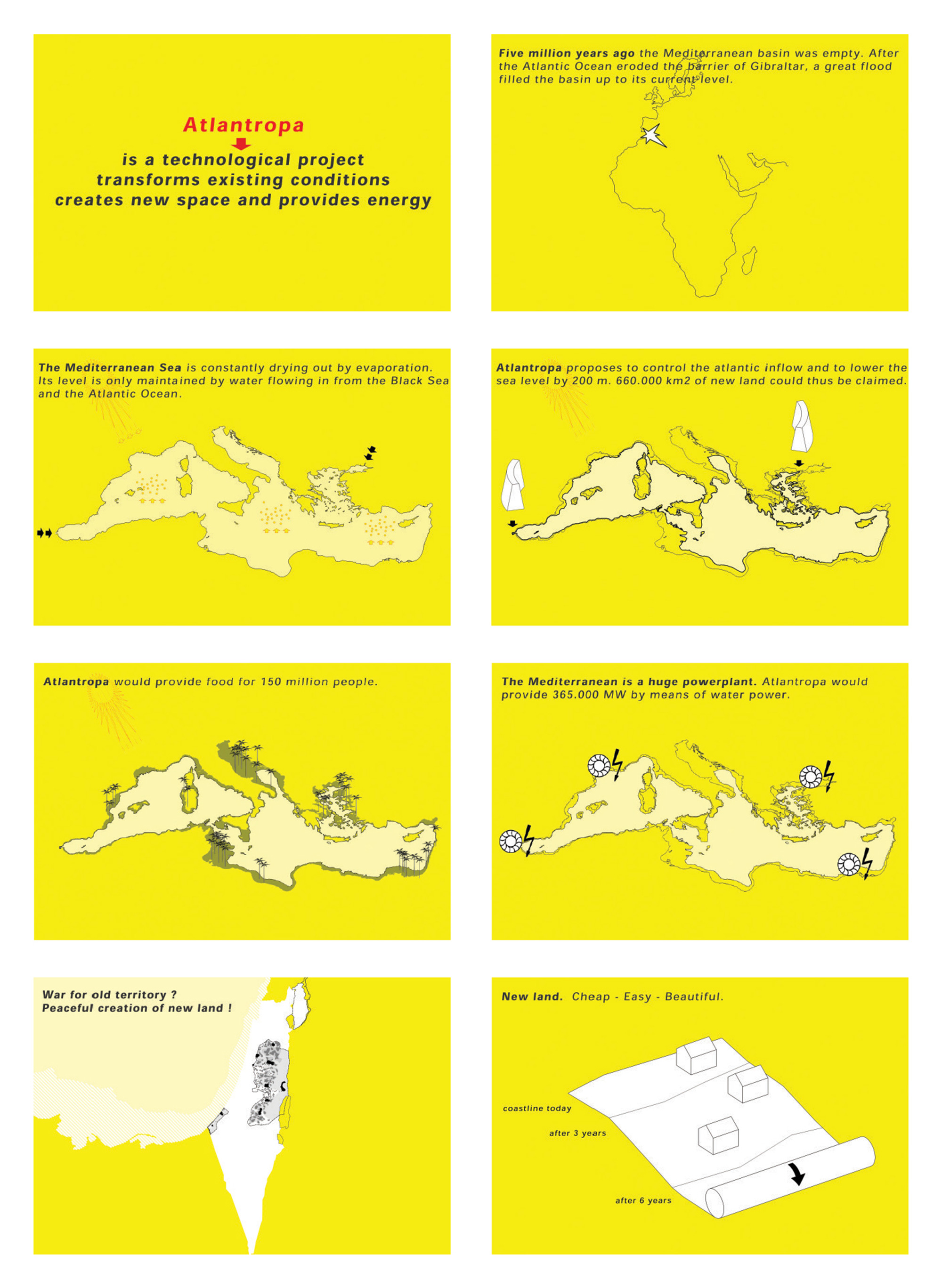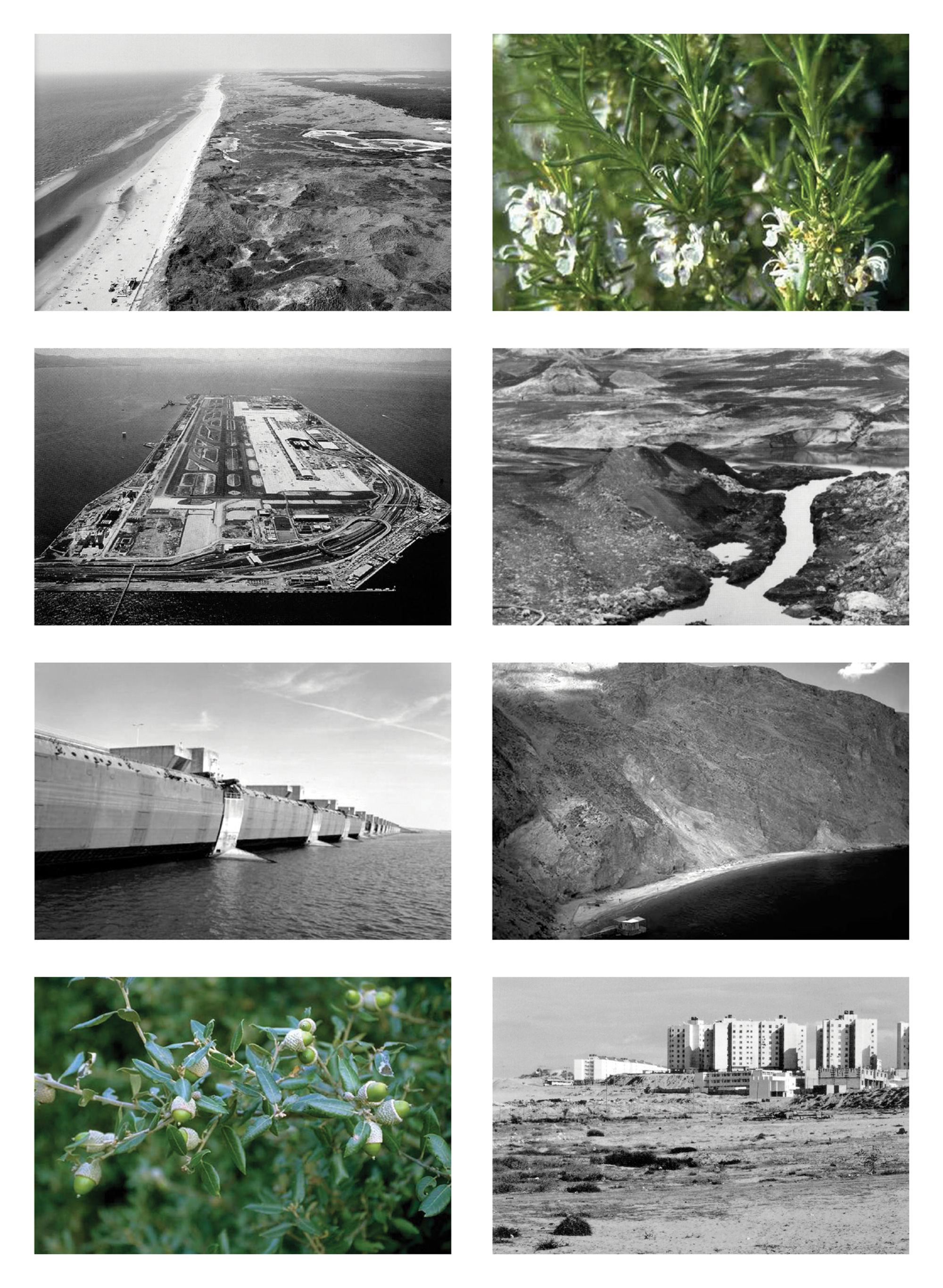Atlantropa
Herman Sörgel’s plan to drain the Mediterranean
edit suisse group
In Gene Roddenberry’s 1979 book version of Star Trek: The Motion Picture, Admiral (former Captain) Kirk stands on a huge dam near Gibraltar; the dam blocks the Atlantic Ocean from the Mediterranean, and uses it to generate electric power. Is this possible or is it just fantasy? Some answers may be found in a book that Roddenberry had in his own library, Willy Ley’s 1954 Engineers’ Dreams, given to him by the German-American scientist and science fiction writer Jesco von Puttkamer. In it, Ley describes a project called “Atlantropa,” devised by a German architect and engineer named Herman Sörgel (1885–1952).
From 1927 until his death twenty-five years later, Sörgel worked on plans for a gigantic project that was initially named “Panropa” and later “Atlantropa.” With the help of a 35-kilometer-long dam in the Straits of Gibraltar, he wanted to cut off the water supply from the Atlantic to the Mediterranean, letting the sea gradually dry up until its water level was reduced by some 200 meters. This was supposed to open up 600,000 square kilometers of new land and enable marvellous new capacities for power generation.
In Sörgel’s plan, a bridge from Tunisia to Sicily would divide the Mediterranean into two different parts, creating a continuous automobile and train connection between Africa and Europe. By converting the Congo Basin into an enormous dammed-up sea, Africa would be turned into a “territory actually useful to Europe,” he wrote. Sörgel followed a social Darwinist and colonialist school of thought, declaring, “The fight for survival is a fight for territory.” Uninhibited by compromises or scruples, the engineer concentrated on reinventing the Mediterranean as a huge power plant. On its western side, the remaining water was to be dammed by gigantic constructions near Gibraltar and between Italy, Sicily, and Tunis. In the eastern half, the sea was supposed to be shaped by the Tunis-Sicily-Italy dam and further dams close to Galipoli and near the Suez Canal. At these points, large power plants were planned to ensure energy and economic security for Europe, Africa, and the Arabian peninsula. This new continent, which Sörgel named “Atlantropa,” was to assume the role of a counterweight to America and Asia.
In four Atlantropa books and some 1000 publications, Sörgel combined a Spenglerian despair of civilization with an engineer’s megalomania. The racist thinking of Sörgel’s time, which saw Africa as an empty continent void of history and culture, was integrated in his belief in technology’s political power. While he did find some audience for his plans in the Weimar Republic, the monocle-wearing dreamer was unable to muster any support from the National Socialists for his plans.
Yet Sörgel’s ideas nevertheless inspired a large number of contemporary intellectuals, architects, and writers. Not only have a handful of works obviously borrowed from Sörgel—including a 1950 movie called Atlantropa: Der neue Erdteil—Das Land der Zukunft (Atlantropa: The New Continent, Land of the Future)—his plans also proved inspirational to architects like Peter Behrens and Erich Mendelsohn. Mendelsohn offered his services to Sörgel for the planning of the new coastline of Palestine, which would have been radically different with the reclaiming of the new land created by the Atlantropa project. It is known that, in 1932, Sörgel himself was reflecting on the effects of these geographical changes on Palestine in relation to the question of the foundation of a Jewish State.[1] Unfortunately nothing is known about any plans advanced by Mendelsohn, a German Jewish architect who had to flee Germany in 1933.
Nevertheless, in 1932, a few months before his emigration, Mendelsohn supported the Atlantropa plan in a manifesto-style speech given in Zurich. To him, Atlantropa offered a chance to overcome the general crisis he had diagnosed in society. This crisis, amplified by the consequences of World War I in his view, encompassed all areas of society: politics, culture, economics, architecture, fine art, literature, and science. With the help of a “world restructuring” driven by technology, Mendelsohn would find an escape from this crisis. He proclaimed:
The upcoming world will allow the nations their characteristics, but unites them into a comprehensive community. Because the problems of the new world affect all peoples as one. We cannot retreat! The speed of traffic has crowded the nations close together, forces them into larger units, in order to avoid getting crushed... We must achieve a state of methodical exchange: of food and capabilities, of production and ingenuity. For this, great supra-national tasks are needed that create new space, new territory, new workspace. The Canal des Deux Mers comes to mind,[2] connecting Marseille and Bordeaux, the Mediterranean and the English Channel, the Panropa-Project, which wants to recover Europe’s actual fruit country, the Mediterranean Basin, by uncovering the once flooded areas with the help of the Gibraltar dam.[3] These are productive technical global tasks that want to finally, logically value a century of technological inventions. Such tasks finally bring man’s reign over technology, so that technology serves him, rather than enslaves him. Because technology and machine are only tools in the hands of man, simply a new element of his knowing-about-the-world, as once water-fire-air-and-soil. Because, if we recognize the elements, then we will overcome chaos—if we build from the elements, then a new world will emerge ... Therefore, we believe in a new world, in a life of reason and order—in politics, economics, and public life. The belief in the accuracy of this interpretation is the deep significance of need, the creative significance of this crisis.[4]
As Mendelsohn’s speech suggests, the Atlantropa project must be considered within the wider framework of similar projects of that time. From 1923 to 1932, in a huge effort, engineers succeeded in reclaiming the Zuidersee in the Netherlands by building a dam between it and the North Sea, gaining thousands of hectares of land. Sörgel wasn’t the only one who had been inspired by this enterprise—Sigmund Freud was also aware of it. In his “31st Lecture on Psychoanalysis” of 1932, Freud described the objective of a psychoanalytic intervention as “Where id was, there ego shall be” (“Wo Es war, soll Ich werden”), from which the following is usually omitted: “It is a work of culture—not unlike the draining of the Zuider Zee” (“Es ist Kulturarbeit etwa wie die Trockenlegung der Zuydersee”).[5] One of the central aims of this process would be the discovery of feelings of guilt at the bottom of one’s memory.

Taking into account the colonizing subtext of the concept of “reclamation” as used here, Freud’s characterization of the “Id” has been compared to Hegel’s characterization of Africa.[6] But some scholars have also identified a direct parallel between psychology and geography in the context of psychoanalytic intervention, a process that would allow “the Ich to reclaim (aneignen) parts of the Es. This metaphor points, once again, to a remarkable simultaneity between events on the level of water management and changes on the level of culture and ideology. From a philosophical point of view, there is a clear affinity between fin-de-siecle (bourgeois) psychology and fin-de-siecle (bourgeois) geography.”[7]
On 25 December 1952, Herman Sörgel died as a result of a car accident. The Atlantropa Institute, an association of collaborators and patrons, dissolved in 1960. These days, the Atlantropa project seems to appear only in the titles of New Age CDs[8] or, strangely enough, in 2003, in German high schools, where it is still being used as a question on a physics exam in which students are asked to calculate the lowering of the Mediterranean’s water level. The test mentions the project as if it was currently being planned and the pupils could contribute to its success by solving a mathematics problem: “How many people could be provided with energy from this power plant?”, the test asks.
In this hypothetical math problem, Sörgel’s extravagant scheme is resituated in the same indeterminate space between fact and fantasy where it always belonged. One fact hardly ever mentioned is that Sörgel’s costly 25-year endeavor was only made possible because of financial support from his wife, Irene Sörgel, who was a successful art dealer.
Thanks to Anjana Shrivastava and Christopher Mühlenberg.

- For this and other information on Sörgel’s project, see Alexander Gall, Das Atlantropa-Projekt. Die Geschichte einer gescheiterten Vision. Herman Sörgel und die Absenkung des Mittelmeers (Frankfurt and New York: Campus, 1998).
- Another project dating from 1928 which was never realized in the form to which Mendelsohn refers.
- Here Mendelsohn refers to the theory that the Mediterranean basin was not originally under water. Sörgel also used this theory as the backbone of his plan, claiming that his scheme would in part restore the basin to its original state. It is known that Sörgel knew about this theory by reading H. G. Wells’s The Outline of History. This theory has now successfully been proven by the Zurich-based Chinese geologist Kenneth Hsü, e.g. in his publication The Mediterranean Was a Desert: A Voyage of the Glomar CHALLENGER (Princeton: Princeton University Press, 1983).
- Erich Mendelsohn, Der schöpferische Sinn der Krise. Vortrag, gehalten auf dem Kongreß des Internationalen Verbandes fuer kulturelle Zusammenarbeit in Zürich (Berlin: Bruno Cassierer Verlag, 1932), pp. 28–29. Translation by the edit suisse group.
- Sigmund Freud, “The Dissection of the Psychical Personality,” Lecture 31 in New Introductory Lectures on Psychoanalysis, trans. James Strachey (London & New York: Penguin Books, 1991), p. 112.
- Helmut Stockhammer, Schnappschüsse in Schwarzweiss, oder: wo liegt Afrika? Kolonialistische Denkformen in Hegels Geschichtsphilosophie und Freuds Metapsychologie.
- Hub Zwart, “Aquaphobia and Tulipomania: An Eco-Historical Narrative (A Concise Philosophical History of the Dutch Landscape).” A revised version is available in Environmental Values under the title “Aquaphobia, Tulipmania, Biophilia: A Moral Geography of the Dutch Landscape.”
- MP3 files of selected tracks from a CD titled Atlantropa are available at www.demo-art.com/music/31_atlantropa_eng.html [link defunct—Eds.].
The edit suisse group is based in Berlin and consists of one architect and three media-workers. Members are Martin Conrads, Ulrich Gutmair, Silvan Linden, and Stefan Schreck. A sound and slide installation by the edit suisse group about the Atlantropa project has been shown in both Tel Aviv and Berlin and was presented in New York in 2001.
Spotted an error? Email us at corrections at cabinetmagazine dot org.
If you’ve enjoyed the free articles that we offer on our site, please consider subscribing to our nonprofit magazine. You get twelve online issues and unlimited access to all our archives.